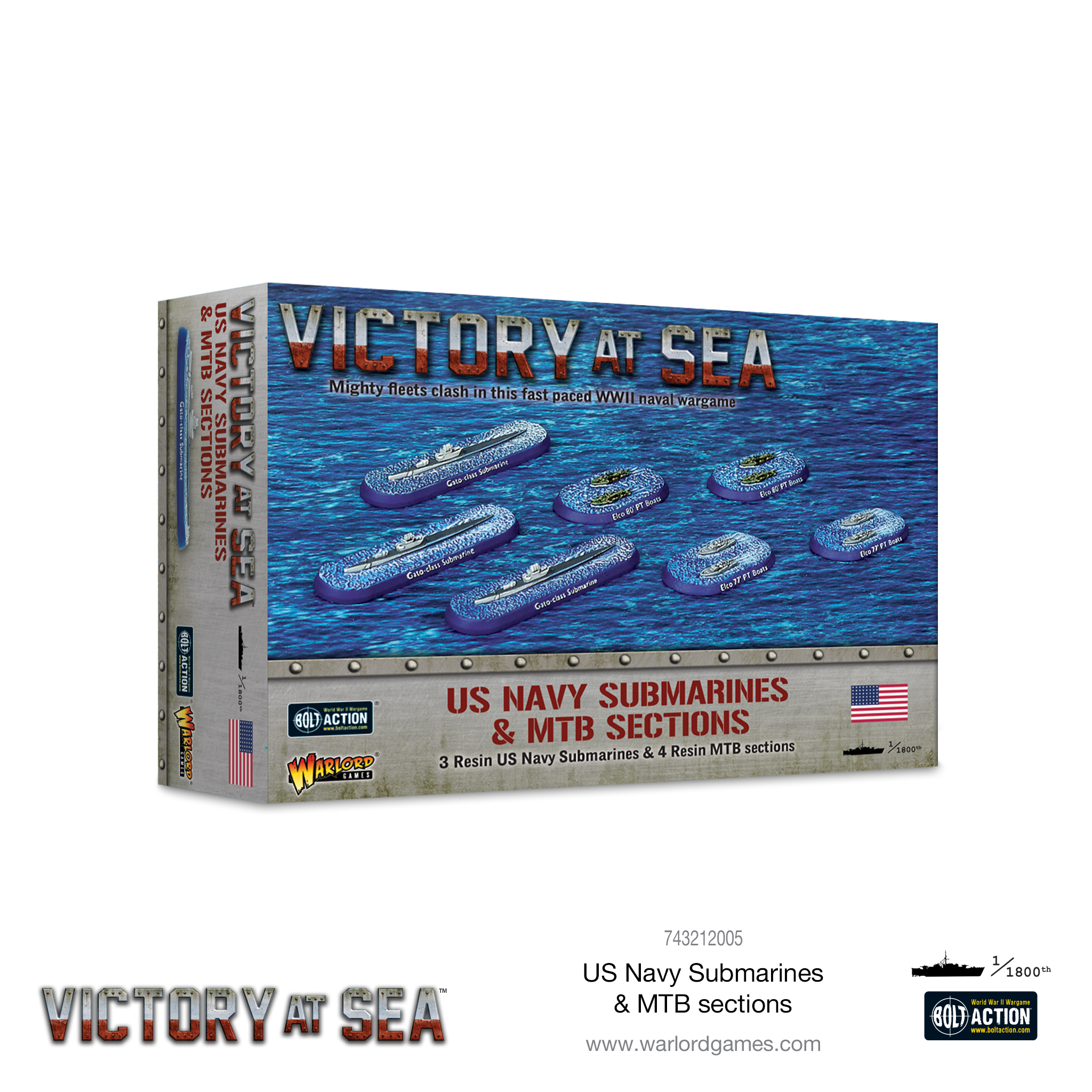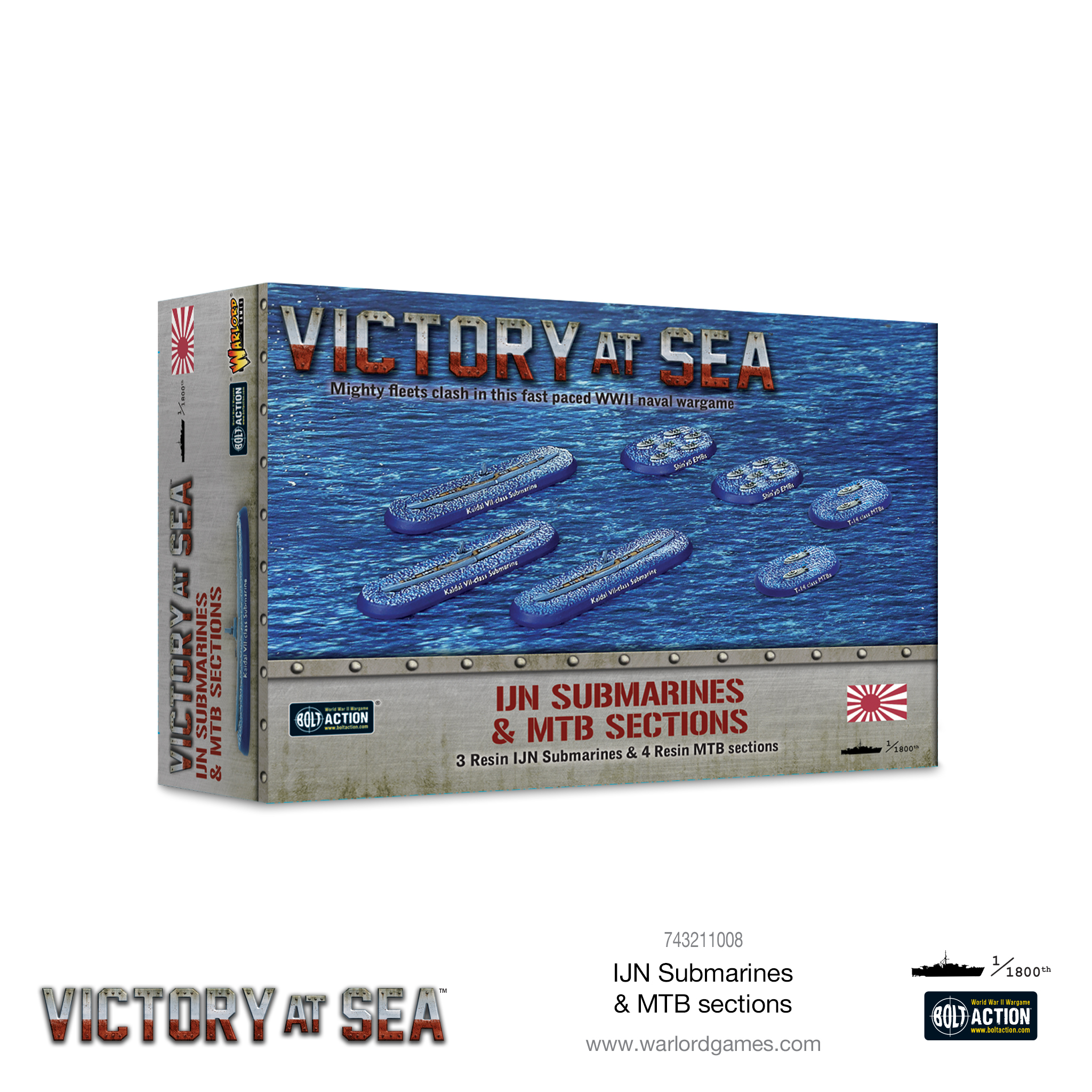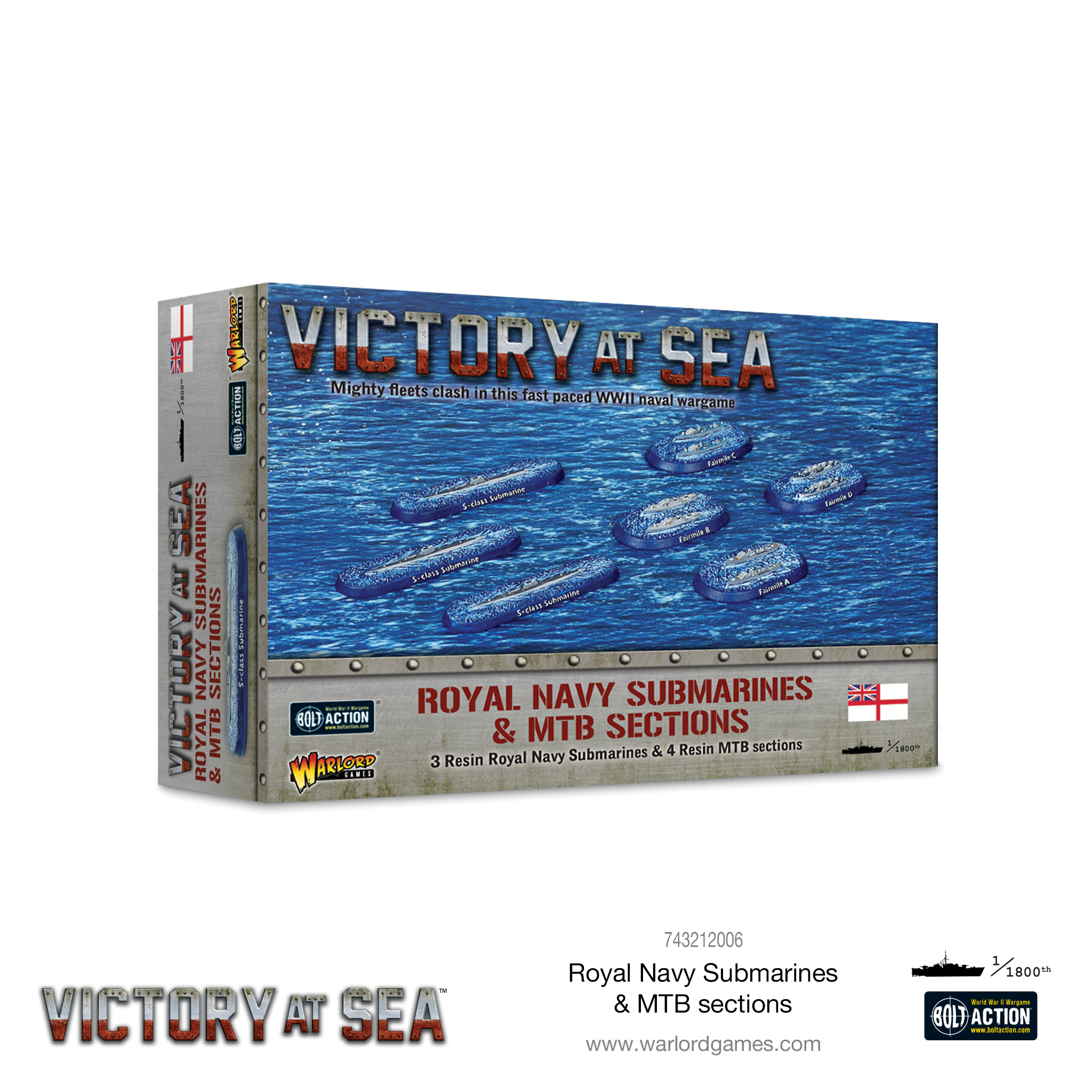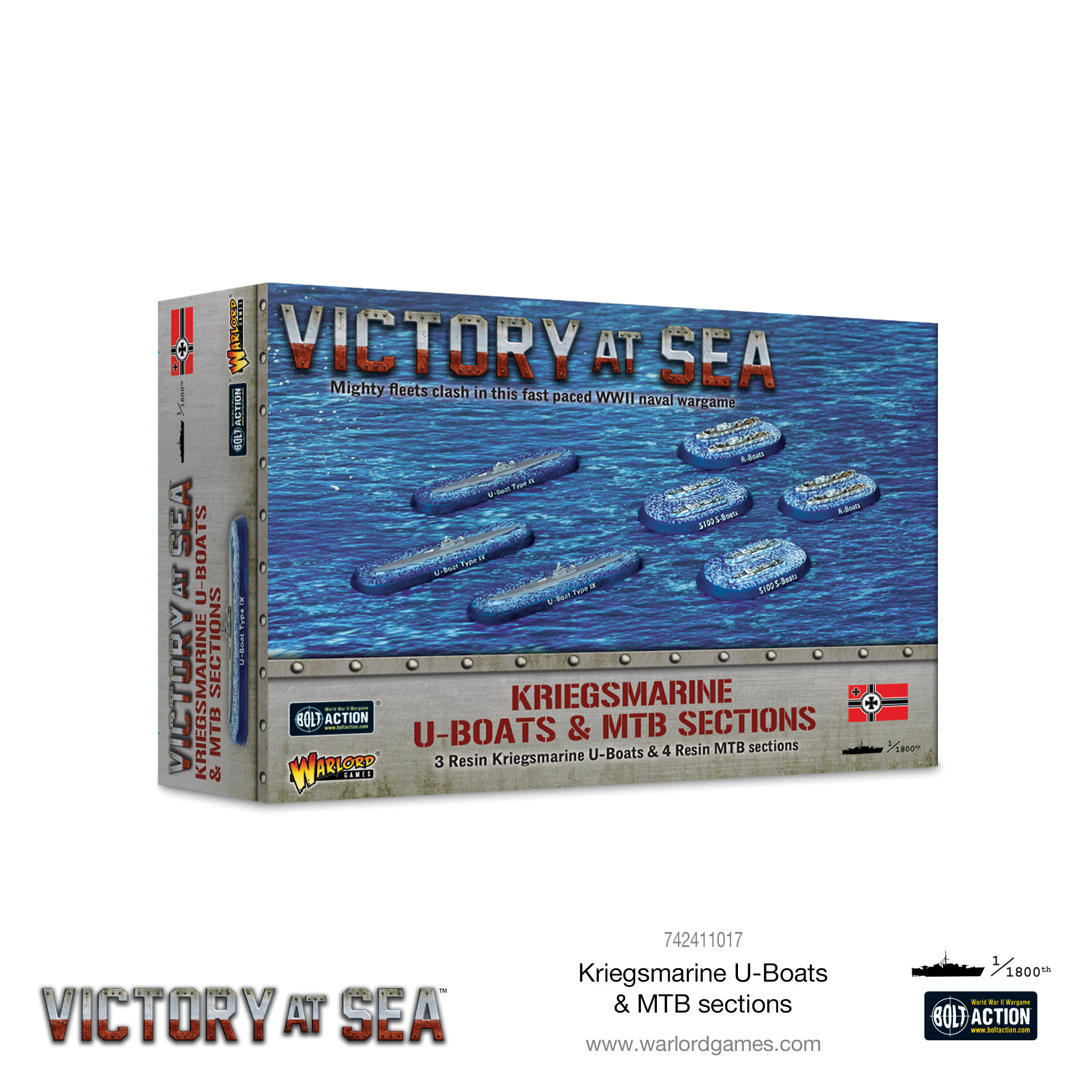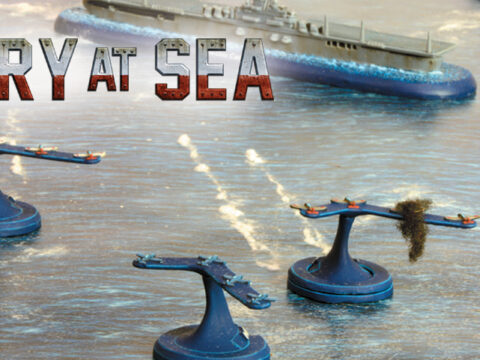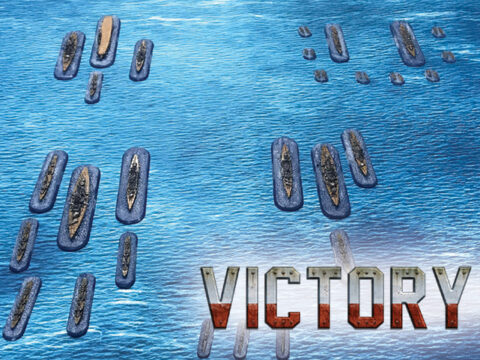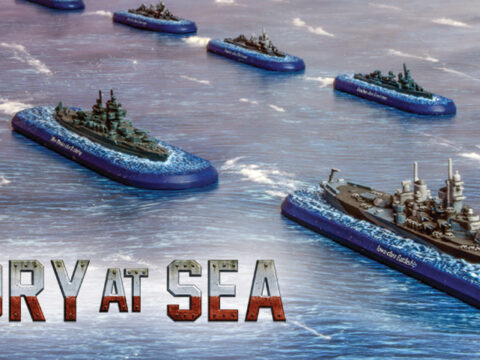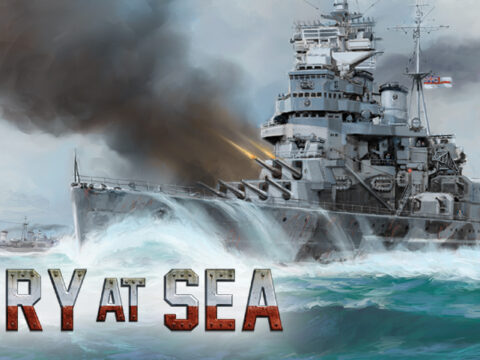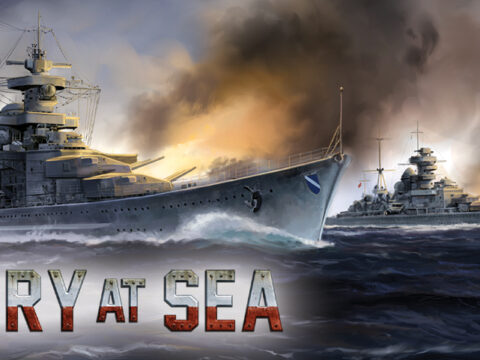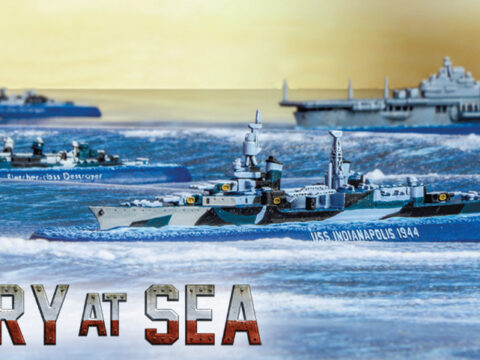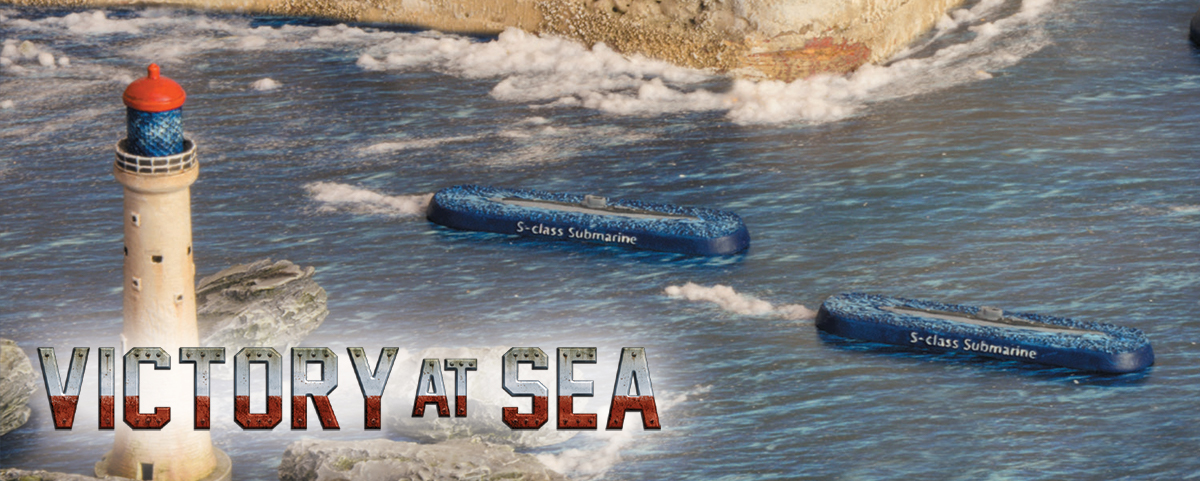
By adding different classes of ship to a Victory at Sea fleet, you open up many new tactical options, with many new avenues to consider. In the new Victory at Sea rulebook, now available to pre-order, you’ll find all the rules you need to field submersibles and MTBs. We’re taking a brief look at their inclusion in a Victory at Sea game and the tactical implications to consider.
Submersibles
Submarines began to affect the way fleets were deployed during the First World War, but it was during the Second World War that they truly came into their own. From midget submarines to the roving Wolf Packs of the Atlantic, the proliferation of submersibles served to bring an end to the dominance of the battleship as much as did the widespread use of aircraft.
Submersibles require some additional rules to properly reflect their role on the oceans of the Second World War.
It was impossible to properly co-ordinate submersibles with surface units in the Second World War, so they were mostly confined to their own missions, such as the three provided in the Victory at Sea rulebook within the dedicated submersibles section (Ambush, Convoy and Harbour Attack). However, with the permission of your opponent, they may be used in other fleet battles.
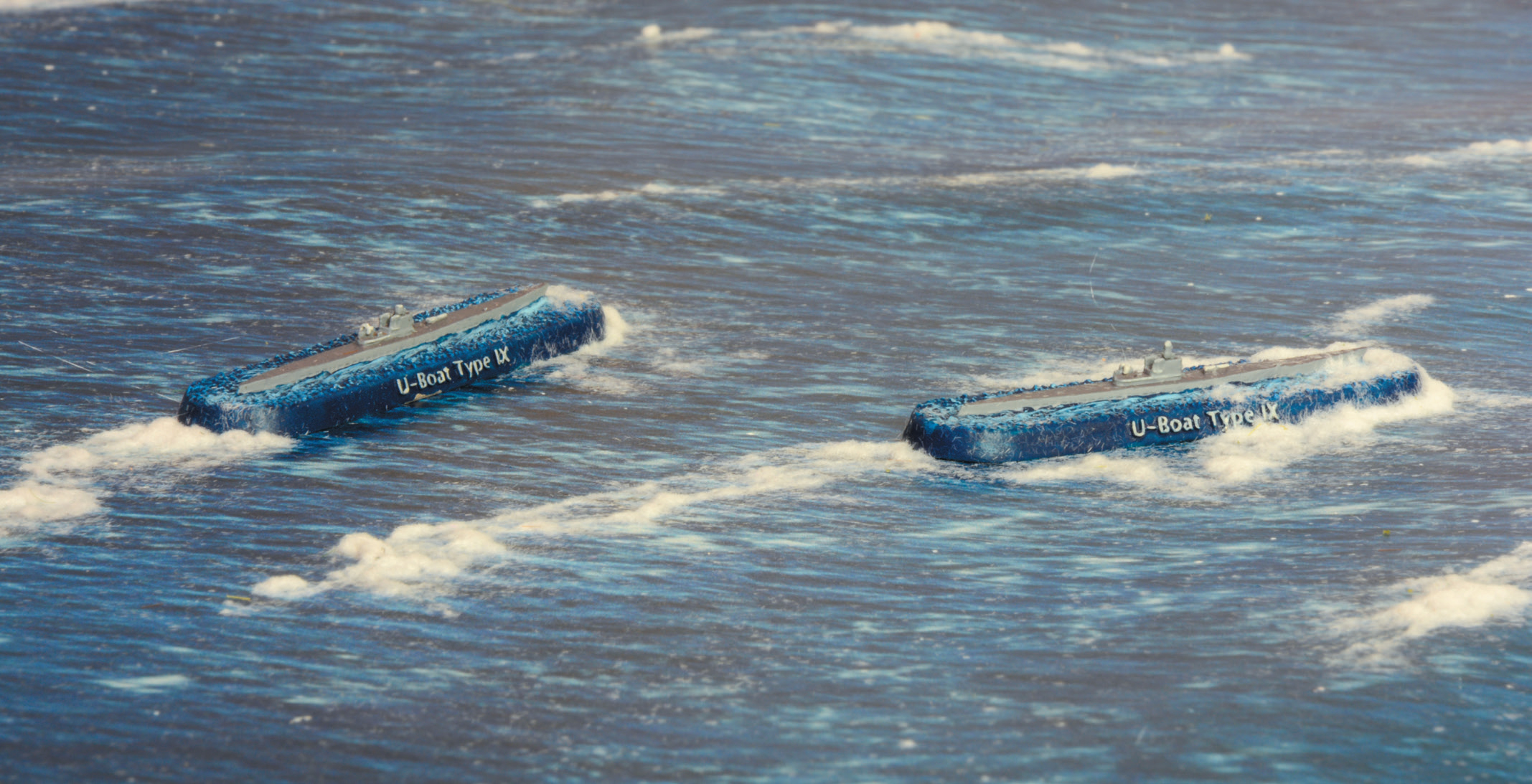
When deploying submersibles, a tabletop must be divided into 12” x 12” sectors, with each assigned a unique number. Any player using a submersible may deploy it secretly within one of these sectors. Submersibles always sail at one of three depths: surfaced, submerged, or running deep (this depth is the default if deployed secretly). Submersibles can change their depth by one level during their movement – note that there are two movement values, denoting a change of speed whether surfaced or submerged.
Surfaced submersibles are treated as per any other ship. A submerged vessel however can only ever fire torpedoes in the gunnery phase, and in turn may only be targeted by depth-charges or similarly specialist anti-sub weaponry (and must also have been detected; see below).
To detect a submarine, a ship must be within 8” of it, and make a successful crew quality check. This check is subject to modifiers such as the depth of the submersible, whether the sub has been previously detected or has recently fired a weapon, or a number of specialised ship traits (like Sub-Hunter). A detected submersible will remain detected until the end of the turn.
There are a number of other rules that are detailed in the Victory at Sea rulebook, such as their interactions with spotter aircraft, crash diving, a number of pertinent ship traits, a new order for submersible crews and much more.
MTB Sections
One of the most hazardous duties in the navies of the Second World War was to serve within the Coastal Forces. Many navies showed a passing interest in motor torpedo boats during the 1930s, when war broke out the utility of small craft to take the fight to the enemy in the ‘narrow seas’ was quickly realised.
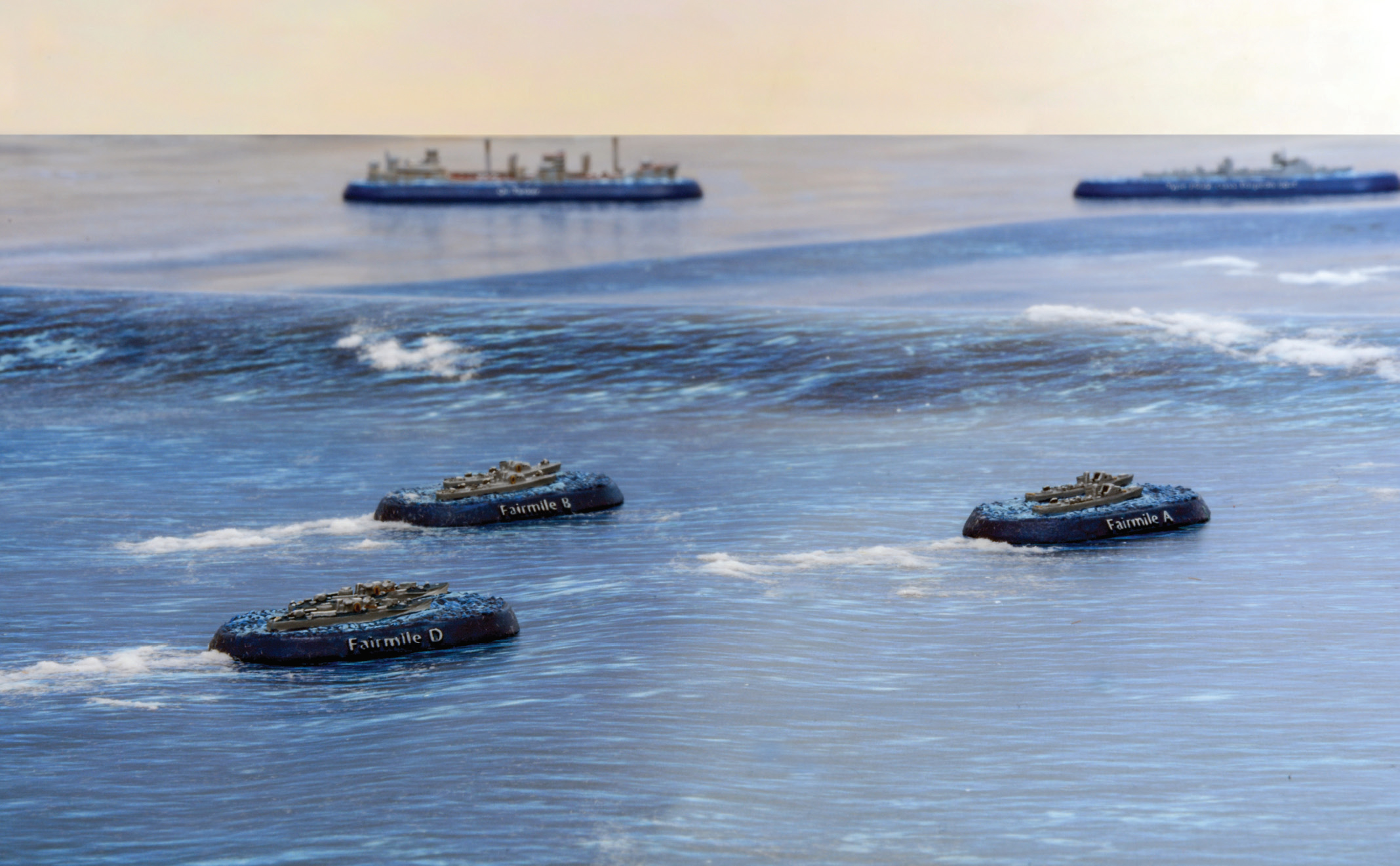
Germany built up considerable numbers of their famous Lurrsen-designed Schnellboote, or S-Boats (although these were often known to the Allies as E-Boats, or Enemy Boats). The Royal Navy built hundreds of Motor Torpedo Boats (MTBs) and Motor Gun Boats (MGBs), with the most prevalent designs coming from Vospers, Camper & Nicholson and Fairmile. The US standard Elco and Higgins built PT Boats were to become a familiar sight in the Mediterranean and the Pacific, while the Italians built many fast, light and successful MAS craft.
Main fighting units were supported by a myriad of gunboats, defence launches, motor minesweepers, minelayers and coastal transports.
Though MTBs are the primary concern of our own Cruel Seas game, they can still be used here alongside much larger vessels, with a few differences to their rules. For instance, when MTB sections in a fleet move, they do so simultaneously in a similar vein to aircraft flights. They have no fire arcs, and can move may move in any direction turning as many times as desired to represent their relative manoeuvrability to the larger vessels.

MTB sections must be in base contact with an enemy ship in order to launch an attack, but when nominating their MTB section to fire, all MTB sections in a fleet will fire at once. MTB sections are only susceptible to light guns and AA battery weapons, being to small for larger weapons to accurately track their movement. AA batteries will automatically attack MTB sections in range in the same way as they would aircraft flights, prior to the gunnery phase outside of the normal game sequence. The trade-off for being relatively difficult to hit is that if a damage dice roll exceeds an MTB section’s armour score, it is immediately destroyed.

